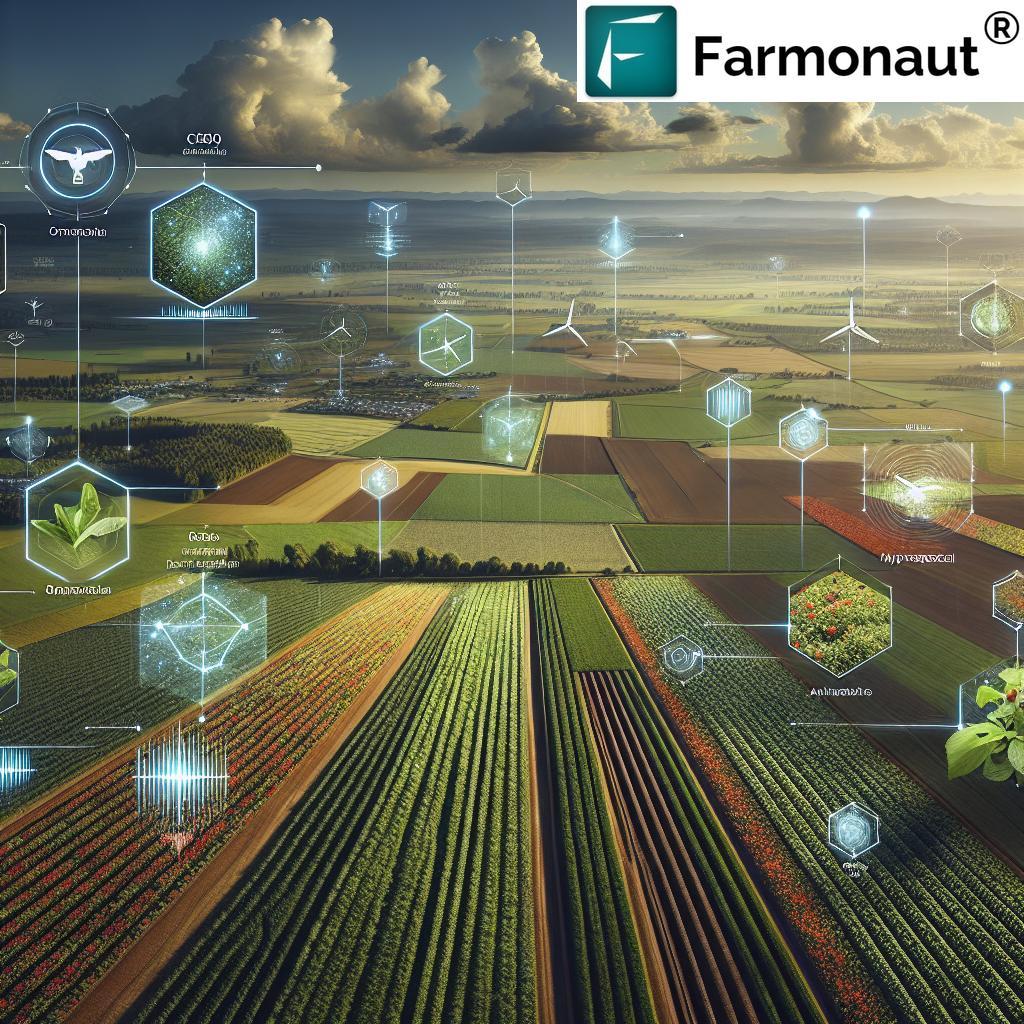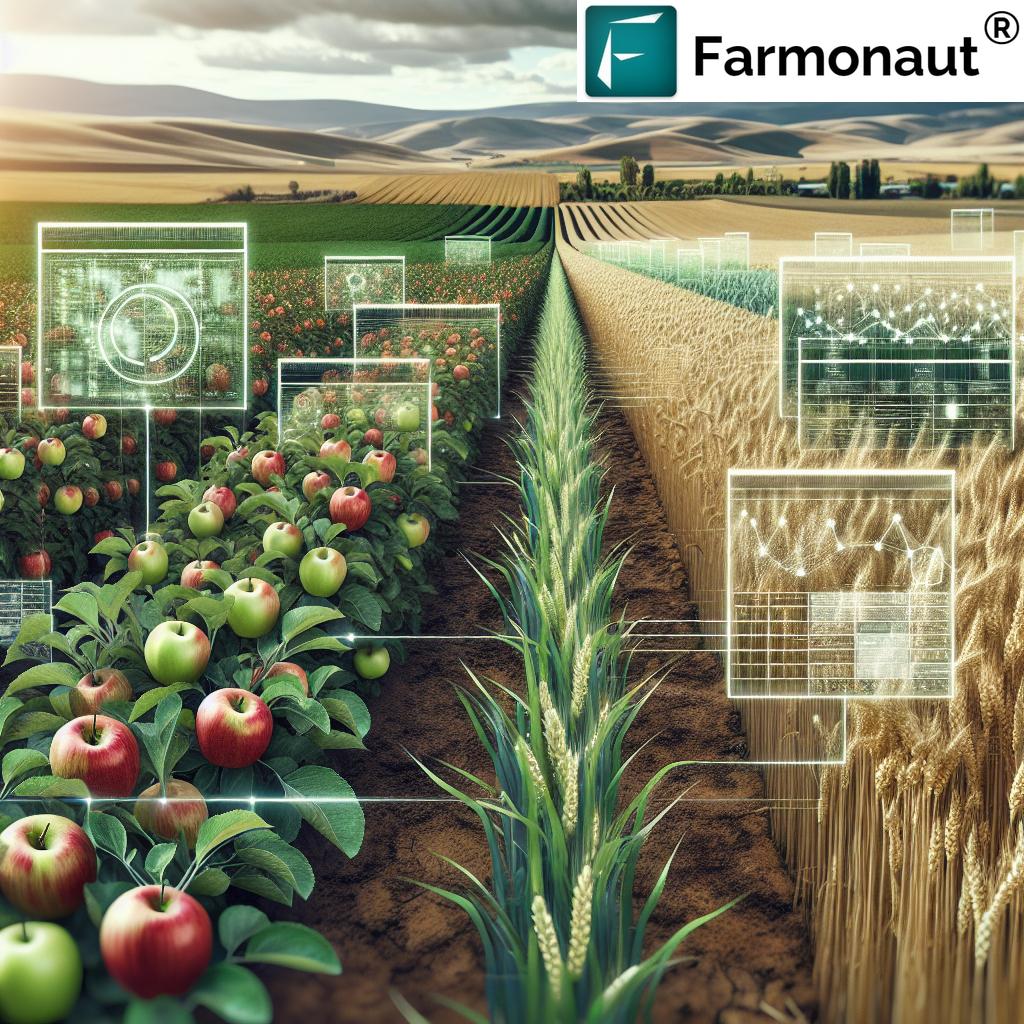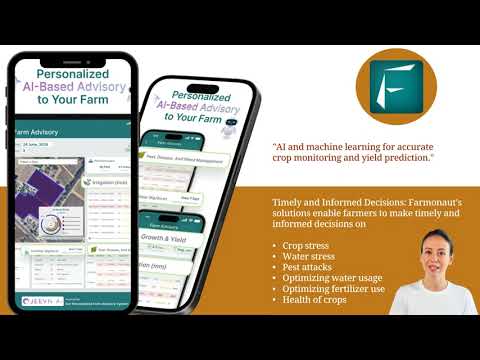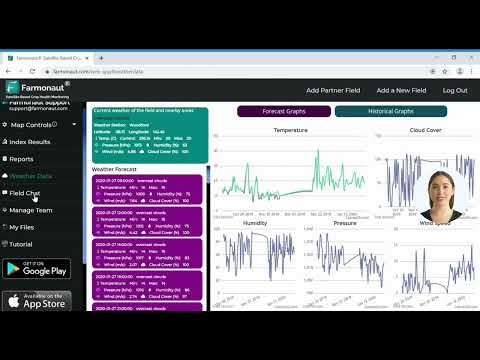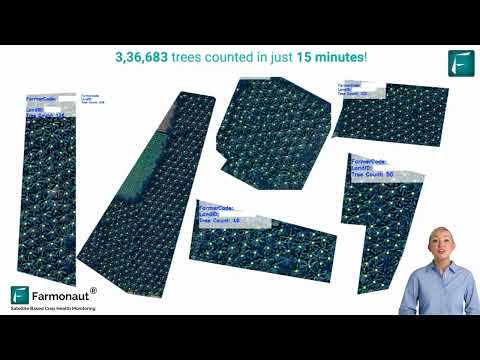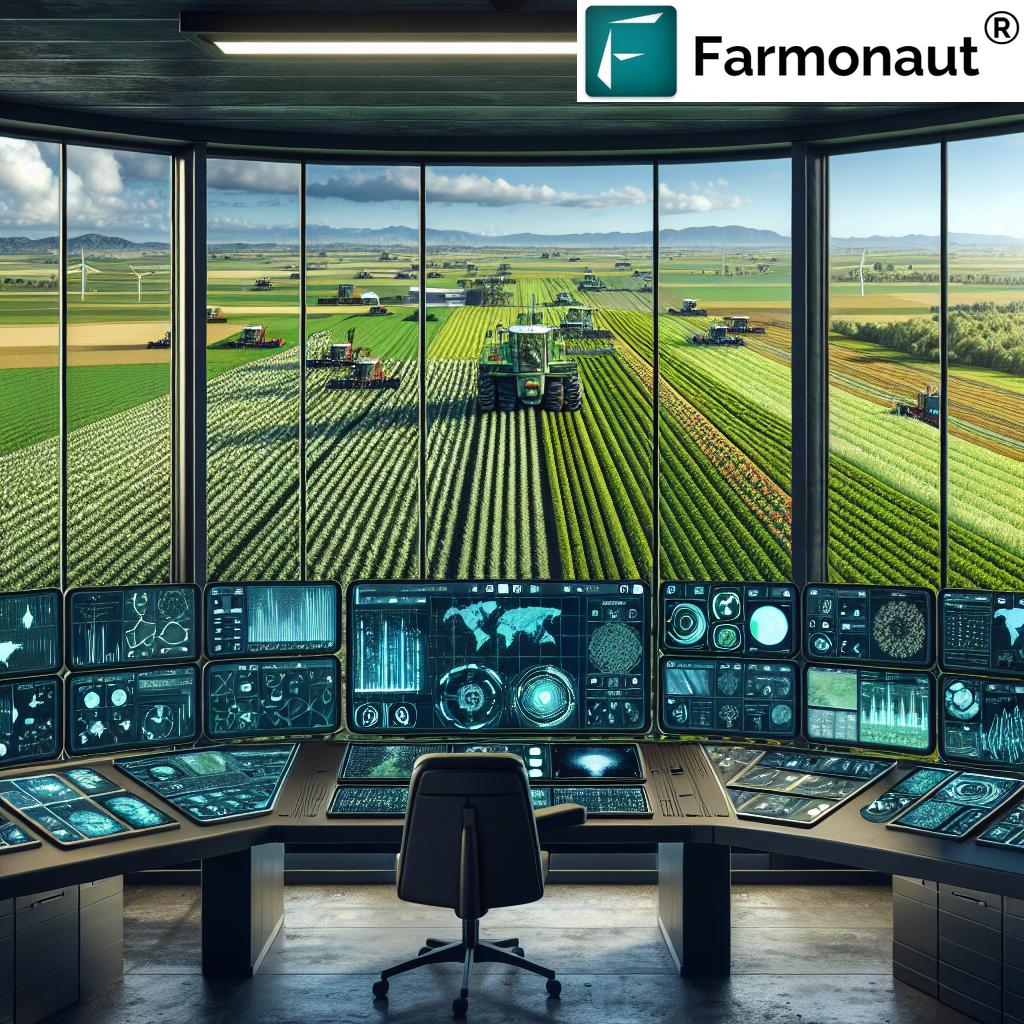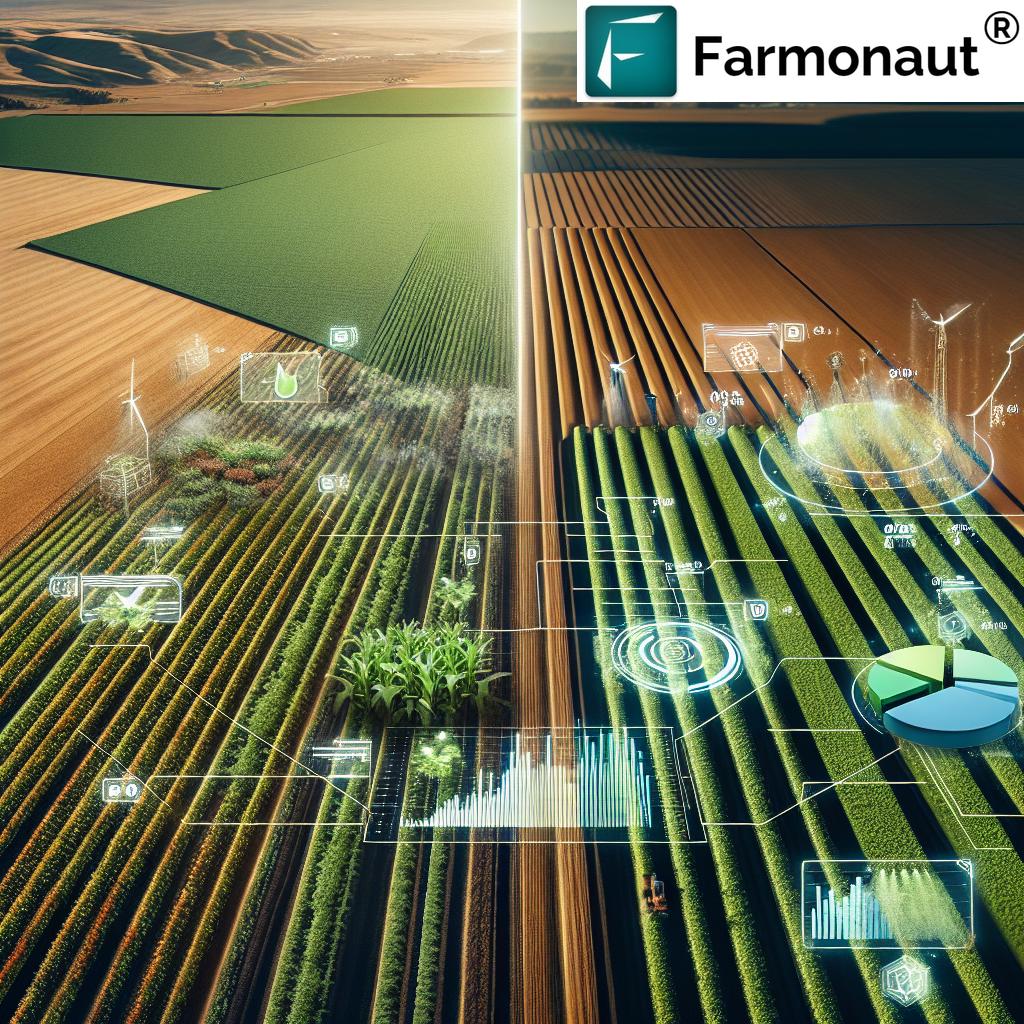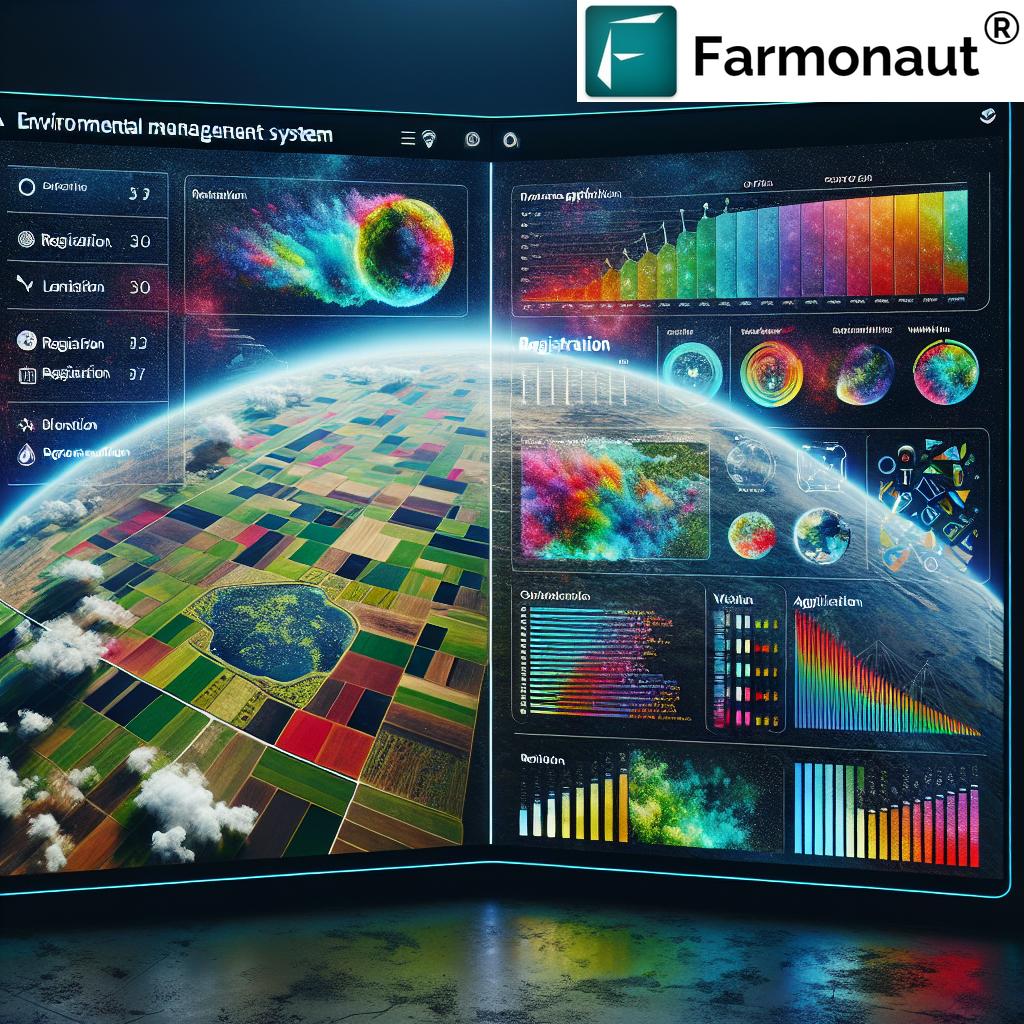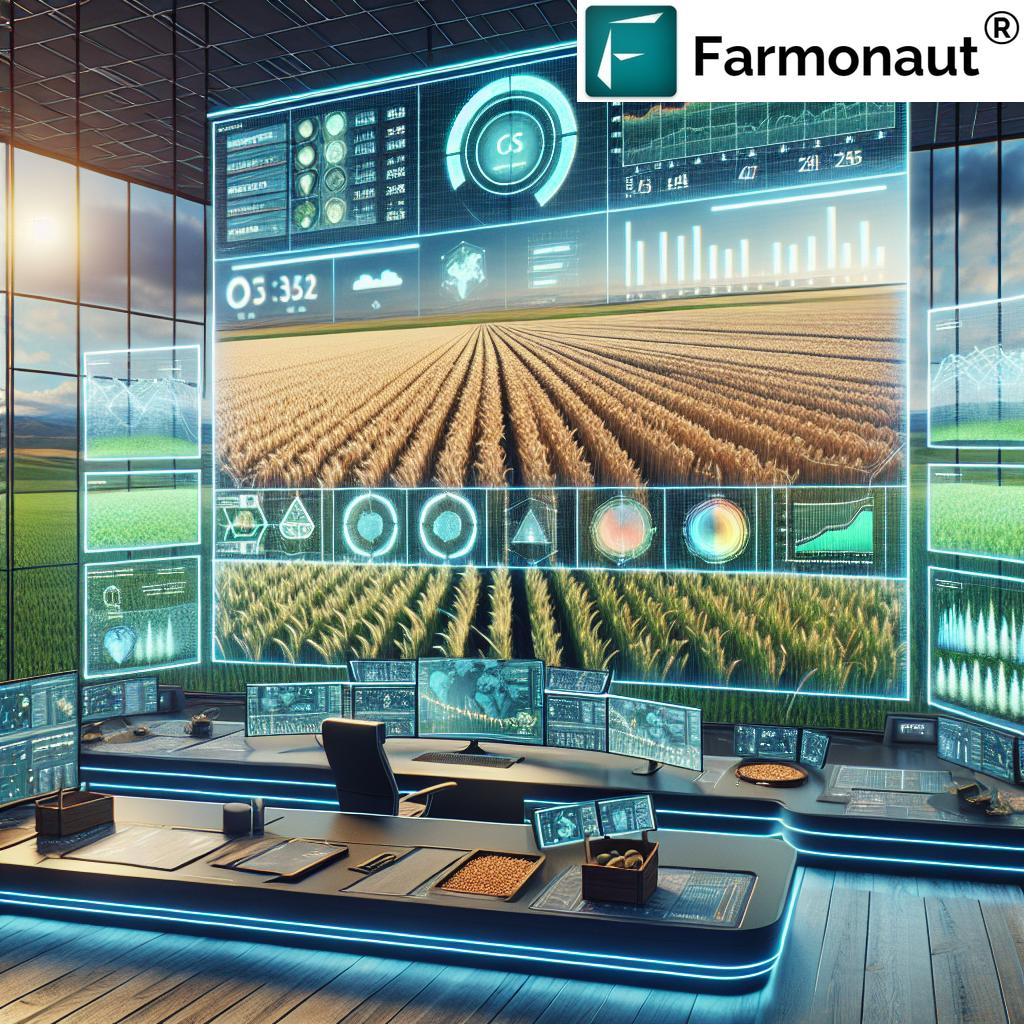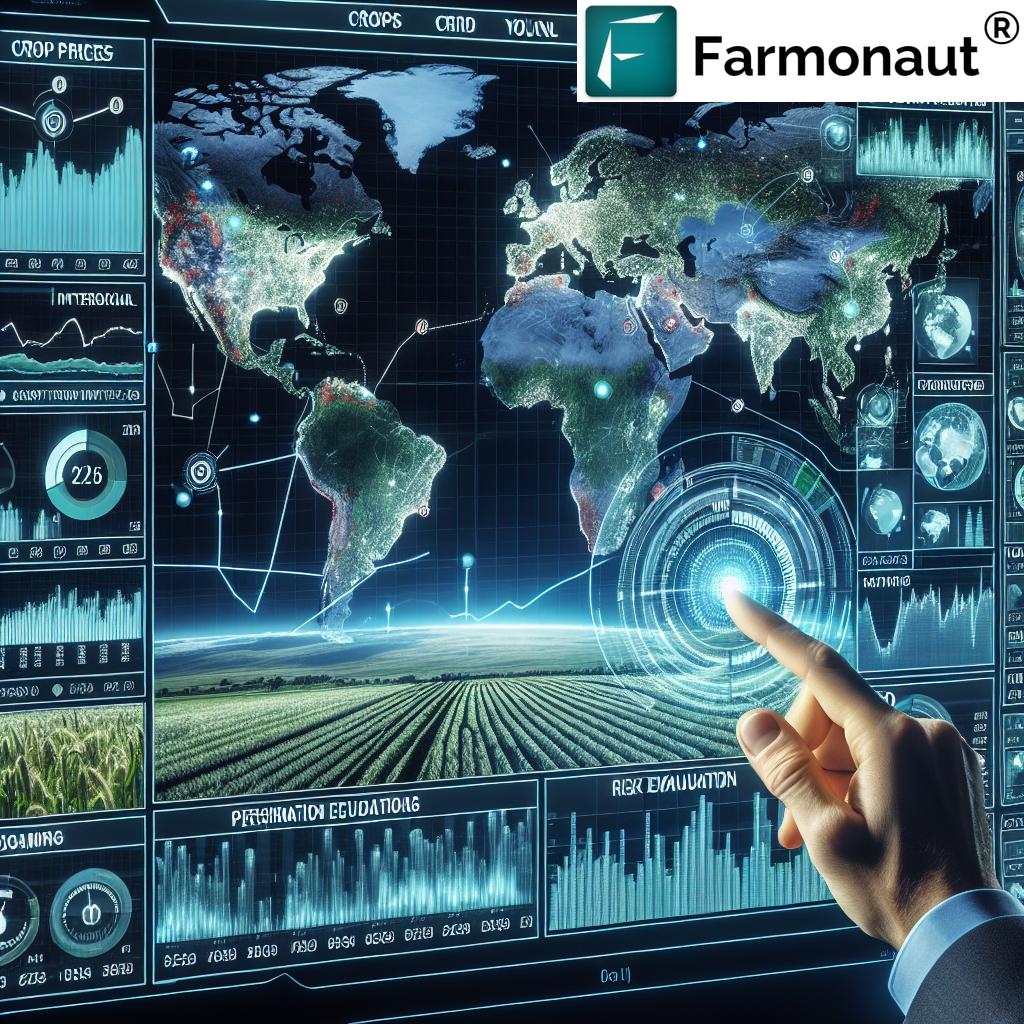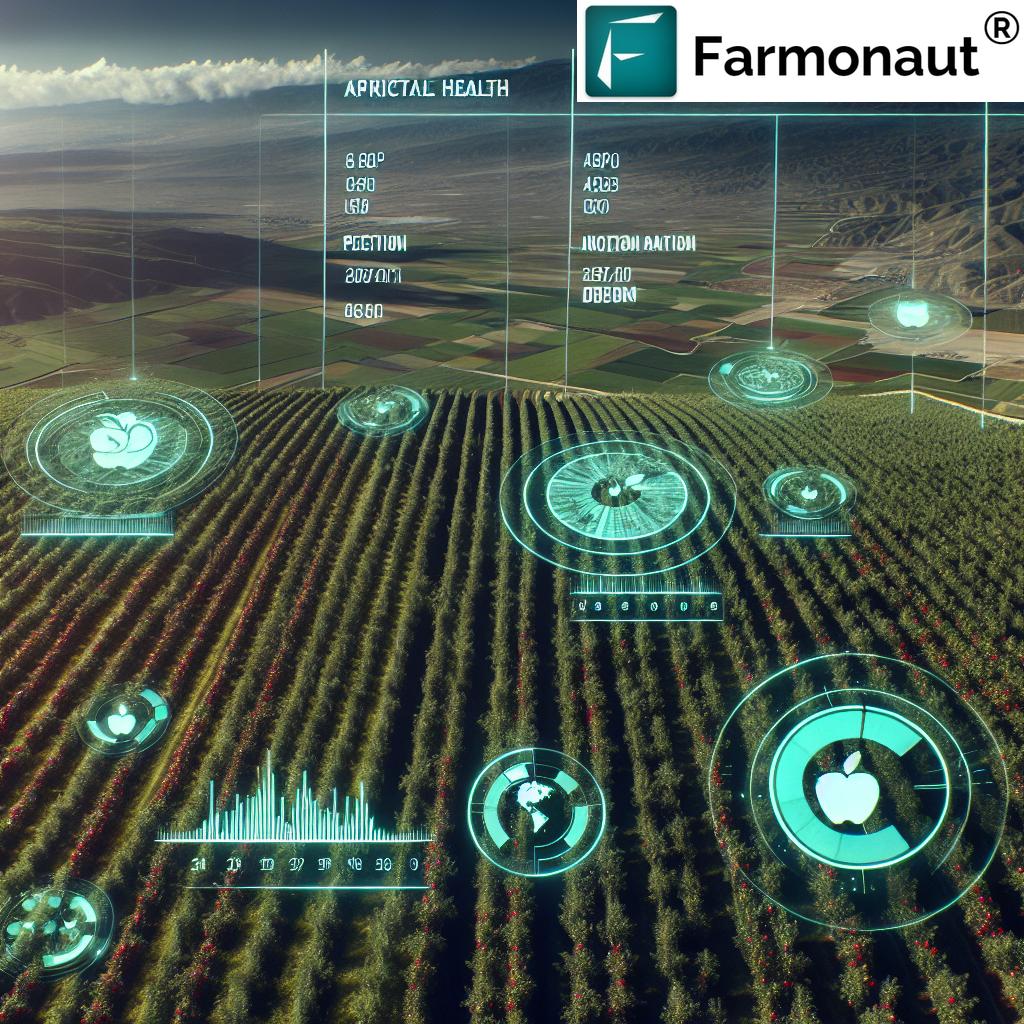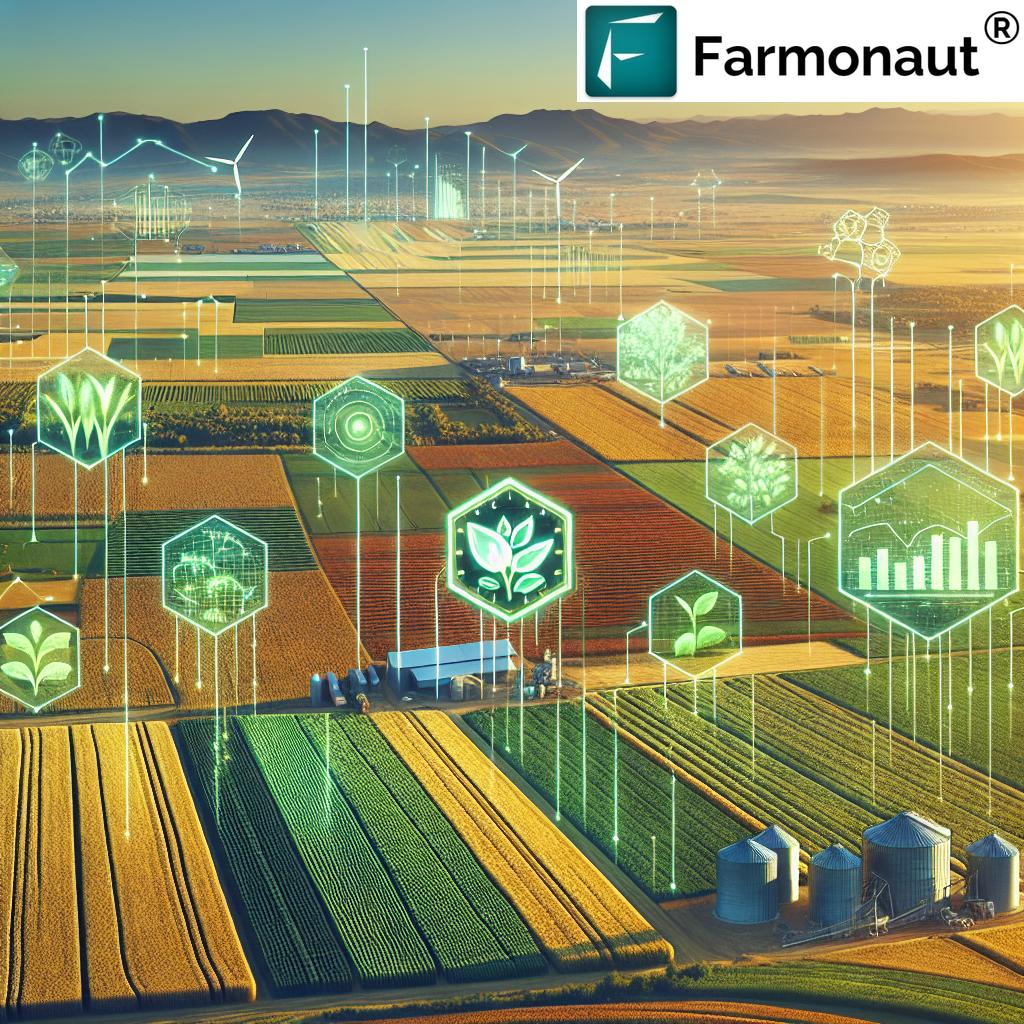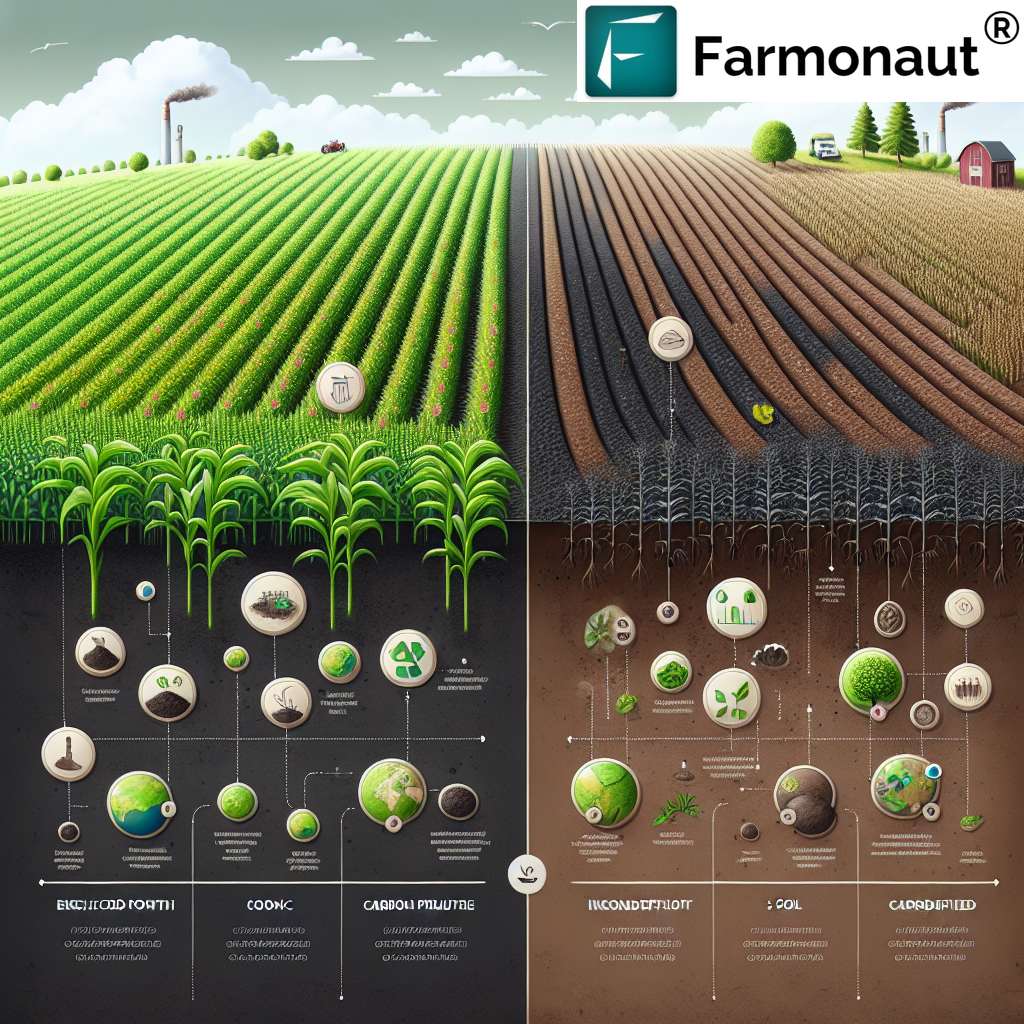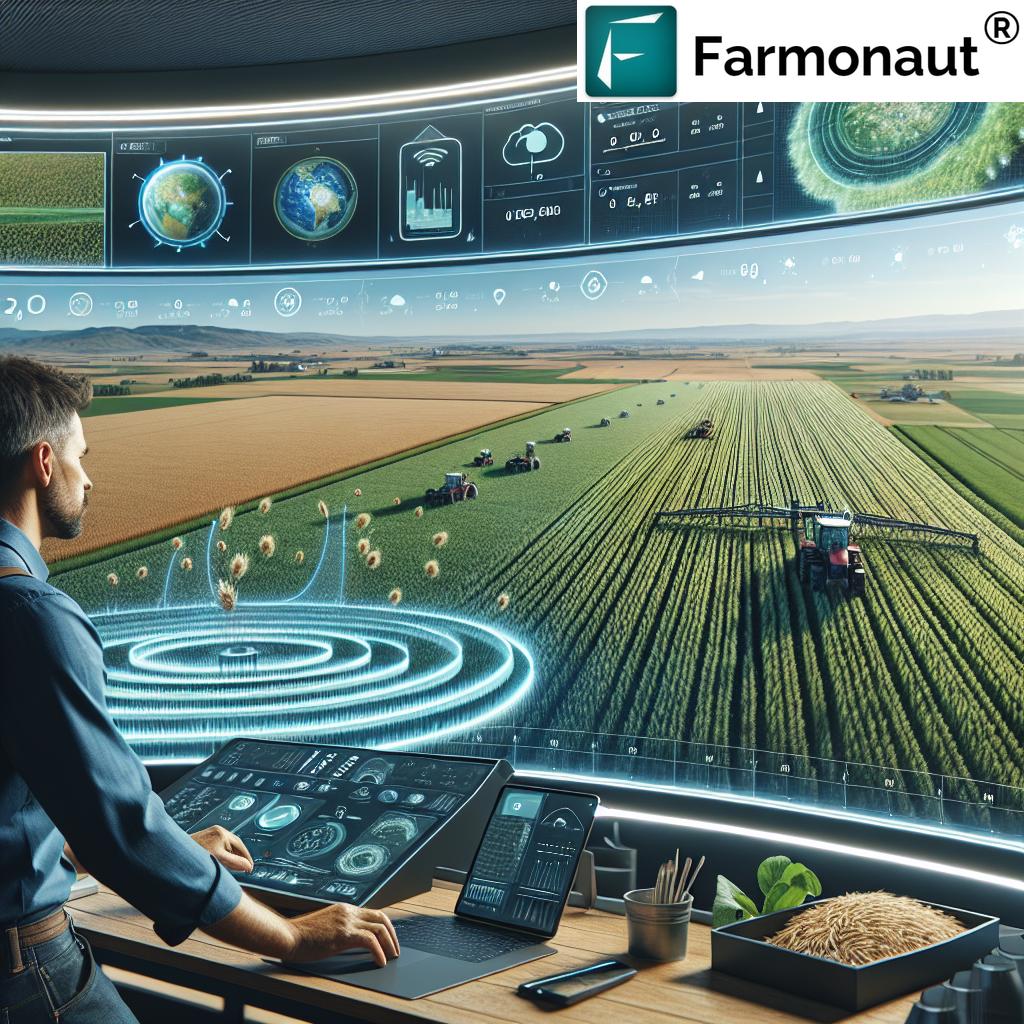AI-Powered Crop Monitoring: 7 Smart Ways to Boost Yields
“AI-powered crop monitoring can increase yields by up to 20% through early disease detection and precision agriculture techniques.”
Table of Contents
- Introduction: The Digital Revolution in Modern Agriculture
- Understanding AI-Powered Crop Monitoring
- Key Components of AI-Powered Crop Monitoring
- 7 Smart Ways AI-Powered Crop Monitoring Boosts Yields
- Comparative Benefits Table: AI-Powered Crop Monitoring Methods
- AI-Powered Crop Monitoring in Farming and Forestry
- Farmonaut: Revolutionizing Precision Agriculture Affordably
- Challenges and Considerations of AI-Powered Crop Monitoring
- The Future of AI-Powered Crop Monitoring and Sustainable Farming
- FAQ: AI-Powered Crop Monitoring
- Get Started With Farmonaut
Introduction: The Digital Revolution in Modern Agriculture
In an era where feeds, fields, and forests must produce more with less, AI-powered crop monitoring is emerging as a game changer. Farming, forestry, and agriculture are witnessing a seismic shift, with artificial intelligence, machine learning, and drone crop monitoring at the core. By harnessing detailed data from satellites, drones, and ground sensors, today’s farmers and foresters can detect diseases early, optimize their operations, and improve yields—while championing sustainable, environmentally gentle practices.
This comprehensive guide explores the key components, technologies, and smart strategies behind AI-powered crop monitoring. We’ll share how platforms like Farmonaut employ satellite imagery and real-time analytics to empower users of all sizes, from smallholders in India to large agribusinesses managing hundreds of hectares.
Understanding AI-Powered Crop Monitoring
What exactly is AI-powered crop monitoring? At its core, it involves the application of artificial intelligence algorithms to analyze data gathered from various sources such as drones, satellites, and in-field sensors. These advanced technologies enable users to assess crop health, detect diseases, identify pest infestations, and predict yields with remarkable accuracy.
By monitoring and analyzing vast agricultural spaces in real-time, AI delivers actionable insights to farmers. This allows for precision interventions, targeted resource allocation, and reduced waste—maximizing the potential of each field, whether a rice paddy in India or a commercial wheat operation in Europe.
Key Components of AI-Powered Crop Monitoring
Let’s break down what makes AI-powered crop monitoring comprehensive, robust, and effective:
-
Data Collection
AI-based crop monitoring starts with accumulating detailed information on the crop and soil conditions.
- Drones equipped with multispectral and hyperspectral sensors capture high-resolution images of fields, enabling early detection of issues.
- Satellites monitor large areas, providing key insights into vegetation indices such as NDVI (Normalized Difference Vegetation Index), soil moisture, and stress signals.
- Ground sensors track microclimatic changes, soil pH, or nutrient deficiencies at specific locations.
This robust data collection offers a comprehensive snapshot of field and plant health, essential for precision agriculture.
-
Data Analysis
AI algorithms and machine learning models process the amassed collected data to identify patterns and anomalies.
- Pattern recognition in vegetation indices, growth rates, and stress symptoms signals potential diseases or pest infestations.
- Early-stage crop disease detection and nutrient deficiency analysis allow for proactive interventions—often before symptoms are visible to the human eye.
Continuous farm data analysis empowers users to make informed decisions about fertilization, irrigation, and pest control.
-
Decision Support & Actionable Insights
After analyzing data, the AI system generates recommendations:
- Pinpointing specific areas that need more water, fertilizer, or targeted pest management (spot spraying).
- Alerting to early signs of diseases, so that farmers can respond rapidly and minimize crop losses.
- Agriculture yield prediction, helping with planning, logistics, and market strategies.
This boosts resource efficiency and helps maintain sustainability.
7 Smart Ways AI-Powered Crop Monitoring Boosts Yields
Let’s dive into the seven most impactful applications and innovations transforming farm productivity and environmental sustainability through AI-powered crop monitoring:
1. Precision Agriculture and Variable Rate Application
- By integrating AI with satellite images and on-field sensors, we enable precision agriculture: every hectare receives tailored irrigation, fertilization, and planting.
- AI computes variable rate maps that direct machinery to apply inputs exactly where—and how much—they’re needed. This reduces waste, minimizes environmental impact, and enhances yields by targeting plant needs accurately.
- Platforms like Farmonaut use satellite-indexed NDVI maps and real-time crop health updates for this very purpose, aligning with the latest in sustainable farming technologies.
2. Early Pest Detection in Crops & Targeted Control
- Early pest detection in crops is critical for limiting damage and reducing reliance on chemical solutions.
- AI-powered drones and satellites quickly scan vast fields for subtle changes in color, pattern, and canopy density that mark infestations.
- This allows for timely interventions—spot spraying or biological control—delivered only where needed, resulting in resource optimization and lower costs.
3. Automated Crop Disease Detection
- With advanced image analysis algorithms, AI can detect crop diseases like apple scab or yellow rust in wheat with exceptional accuracy.
- This early detection minimizes the spread, protects yields, and saves input costs since farmers can intervene locally, not across the whole field.
- Farm data analysis enhances this further, as AI systems use historical and real-time case data to refine detection models for each crop and region.
4. Yield Prediction & Forecasting
- Agriculture yield prediction harnesses AI’s strength at analyzing trends, weather patterns, soil moisture, and growth data.
- By comparing past and present conditions, AI models can predict potential yields with high confidence, guiding harvest planning, storage logistics, and market strategies.
- This helps minimize losses due to overproduction or unexpected stresses.
5. Drone Crop Monitoring & Real-Time Field Mapping
- Drone crop monitoring is revolutionizing the scale and speed with which we assess crop and soil health:
- Drones cover hundreds of hectares in minutes, capturing high-resolution images from multispectral and hyperspectral sensors.
- The resulting maps reveal in-field variation, nutrient deficiencies, pest infestations, and areas at risk of disease.
- These insights feed directly into AI-powered farm management systems and platforms like Farmonaut for seamless action.
6. Soil and Moisture Monitoring for Resource Efficiency
- Field-level sensors and satellite soil analytics provide continuous updates on moisture levels, evapotranspiration, and nutrient cycles.
- AI interprets these changing signals and recommends precise irrigation or fertilization schedules.
- This is key to water conservation and reduced nutrient runoff—vital for sustainability.
7. Forest Health Monitoring and Safeguarding Biodiversity
- AI-powered crop monitoring isn’t limited to farmland. In forestry, drones and satellites scan vast forest tracts to identify invasive pests, illegal logging, or disease hotspots in real time.
- These monitoring systems support sustainable forest management, biodiversity conservation, and rapid response to environmental threats.
“Over 70% of farmers using AI-based monitoring report improved sustainability and resource efficiency in their agricultural practices.”
Comparative Benefits Table: AI-Powered Crop Monitoring Methods
To truly grasp the advantages of different AI-based monitoring technologies, let’s compare their outcomes on yield, disease detection, sustainability, and cost-effectiveness:
| Technology/Method | Estimated Yield Increase (%) | Disease Detection Speed (Days) | Sustainability Score (1-10) | Cost-Effectiveness (1-10) |
|---|---|---|---|---|
| AI Analytics on Satellite Data (e.g. Farmonaut NDVI) | 11-20% | 2-7 | 9 | 9 |
| Drone Imaging & Crop Mapping | 10-16% | 1-3 | 8 | 7 |
| AI-Based Disease Detection & Pest Alerts | 12-18% | 0-2 | 8 | 8 |
| Sensor-Driven Soil & Moisture Monitoring | 8-15% | 3-10 | 9 | 8 |
| Forest Health Monitoring (Satellite/Drone) | 5-12% | 2-7 | 10 | 8 |
AI-Powered Crop Monitoring in Farming and Forestry
AI in Farming: Optimizing Resource Use and Crop Health
-
Farming operations have always depended on timely detection and field health monitoring. With AI-powered tools, we get:
- Real-time updates on nutrient deficiencies and water stress.
- Automation in data collection and analysis, saving labor hours and improving efficiency.
- Custom alerts to apply corrective interventions efficiently—no more blanket pesticide or fertilizer use.
Forest Health Monitoring
- Forest health monitoring uses AI algorithms and remote sensing imagery to scan for changes indicating pest infestations, unauthorized clearing, or disease outbreaks.
- These AI systems enable rapid, wide-area detection—empowering land managers to intervene before major damage occurs and supporting conservation goals.
Sustainable Farming Technologies
-
Sustainable farming technologies built on AI ensure resources are used where they bring the most value, substantially reducing environmental footprint.
- Crop rotation plans, cover cropping, and field mapping become data-driven, measurable, and more effective for long-term land stewardship.
Farmonaut: Revolutionizing Precision Agriculture Affordably
Farmonaut stands at the vanguard of affordable, accessible AI-powered crop monitoring. By integrating satellite-based monitoring, AI analytics, and blockchain traceability, Farmonaut brings next-gen precision agriculture solutions within reach for every farmer, agribusiness, and government agency.
- Multispectral Satellite Imagery: Farmonaut’s scalable technology monitors large areas for vegetation health, soil moisture, and early stress signals across various crops—without expensive hardware.
- Jeevn AI Advisory System: Personalized, real-time farm advice is delivered via mobile, web, or API, helping users make better decisions from anywhere—desk or field.
- Blockchain-Based Traceability: Every step in the crop’s journey, from seed to harvest to supermarket, is securely documented, boosting confidence and reducing fraud.
- Carbon Footprinting: Farmonaut enables real-time monitoring of emissions so users can minimize environmental impact (learn more about carbon tracking here).
- Accessibility: The platform is usable by farmers of all scales—from smallholders to global enterprises—across Android, iOS, web app, and API integration. Get started now with the options below!
Platforms like Farmonaut are not online marketplaces, input sellers, or regulatory entities. Instead, we empower the agriculture ecosystem with data-driven insights, sustainability tools, and intelligent monitoring systems—democratizing precision farming worldwide.
Challenges and Considerations of AI-Powered Crop Monitoring
While AI-powered crop monitoring offers remarkable benefits, certain challenges can slow or complicate widespread adoption:
- High Initial Costs: Advanced drone systems, sensors, and AI models may still be out of reach for many small-scale farmers. Farmonaut addresses this by eliminating the need for on-field hardware and leveraging satellites for affordable monitoring.
- Data Privacy: Farmers may have questions regarding data ownership and privacy. Transparent policies and local data stewardship are essential for user trust.
- Technical Expertise: Complex AI platforms require training and technical support. Farmonaut’s intuitive interface reduces friction, but continuous education is vital.
- Data Quality and Calibration: Sensor accuracy, cloud interference, or outdated satellite passes may sometimes limit real-time insights. Redundancy and cross-verification with ground truthing help improve accuracy.
The Future of AI-Powered Crop Monitoring and Sustainable Farming
The trajectory of AI-powered crop monitoring is set on rapid Innovation. In the near future, we anticipate:
- Deeper Integration with Farm Machinery: Direct links between AI systems and autonomous tractors or irrigation systems will enable fully automated, adaptive farming.
- Even Higher Accuracy: As data sets grow and algorithms self-learn, detection of subtle issues and nuanced yield predictions will improve.
- Scalability and Accessibility: Platforms will be increasingly localized for smallholder farms, various languages, and regions—bridging the rural-urban technology gap.
- Sustainable Incentives: With carbon tracking and traceability (see Farmonaut’s Carbon Footprinting), eco-friendly practices will be easier to measure and reward.
- Collaboration and Interoperability: APIs and digital infrastructure (see Farmonaut API) will help governments, supply chains, and researchers work together for food security.
FAQ: AI-Powered Crop Monitoring
-
What is AI-powered crop monitoring?
It’s the use of artificial intelligence and advanced sensors to analyze satellite, drone, and environmental data, providing real-time insights on crop and soil health for better management decisions. -
How does drone crop monitoring benefit farmers?
Drones rapidly capture high-resolution images, enable early detection of pests and diseases, and allow for more precise, efficient interventions to improve yield and reduce losses. -
Is AI-powered crop monitoring affordable?
With platforms like Farmonaut using satellite technology—no expensive in-field hardware—precision agriculture is becoming affordable and accessible globally, especially for small and mid-sized farms. -
Can AI predict yields and help with planning?
Yes, AI algorithms analyze historic and current farm data to offer reliable yield predictions, empowering farmers with actionable intelligence for better supply and resource planning. -
How does AI-powered crop monitoring support sustainable farming?
By minimizing waste, enabling precise application of resources, and supporting eco-friendly practices through carbon tracking and traceability, AI tools reduce environmental impact and promote long-term sustainability. -
Do I need technical expertise to use platforms like Farmonaut?
No; modern apps and dashboards are designed to be intuitive. However, training resources and support are available for those seeking more in-depth knowledge or integration.
Get Started With Farmonaut
Ready to bring AI-powered crop monitoring to your field or forest? Whether you’re a smallholder, a large-scale agribusiness, or a policymaker, Farmonaut’s advanced yet affordable platform gives you the tools to monitor, analyze, and optimize your operation for productivity, profitability, and sustainability.
- Sign up for the web platform, Android, or iOS app for instant access to AI-driven crop health analysis, NDVI maps, moisture and disease alerts, and more.
- For developers and agri-enterprises, integrate Farmonaut’s capabilities through the API—backed by full developer documentation—and build smart agriculture systems of the future.
- Maximize resources, minimize risks, and contribute to a sustainable food ecosystem by leveraging the power of data and artificial intelligence in agriculture.
Summary: The Future is AI-Powered and Sustainable
The intersection of artificial intelligence, satellites, and data-driven farm management has unlocked a new era of productivity, resilience, and environmental stewardship in agriculture and forestry. By embracing AI-powered crop monitoring tools—like those from Farmonaut—we can increase yields, cut waste, optimize input use, and promote true sustainability for generations to come.
Let’s put the future of farming on autopilot—smarter, more sustainable, and more productive, for everyone everywhere.


